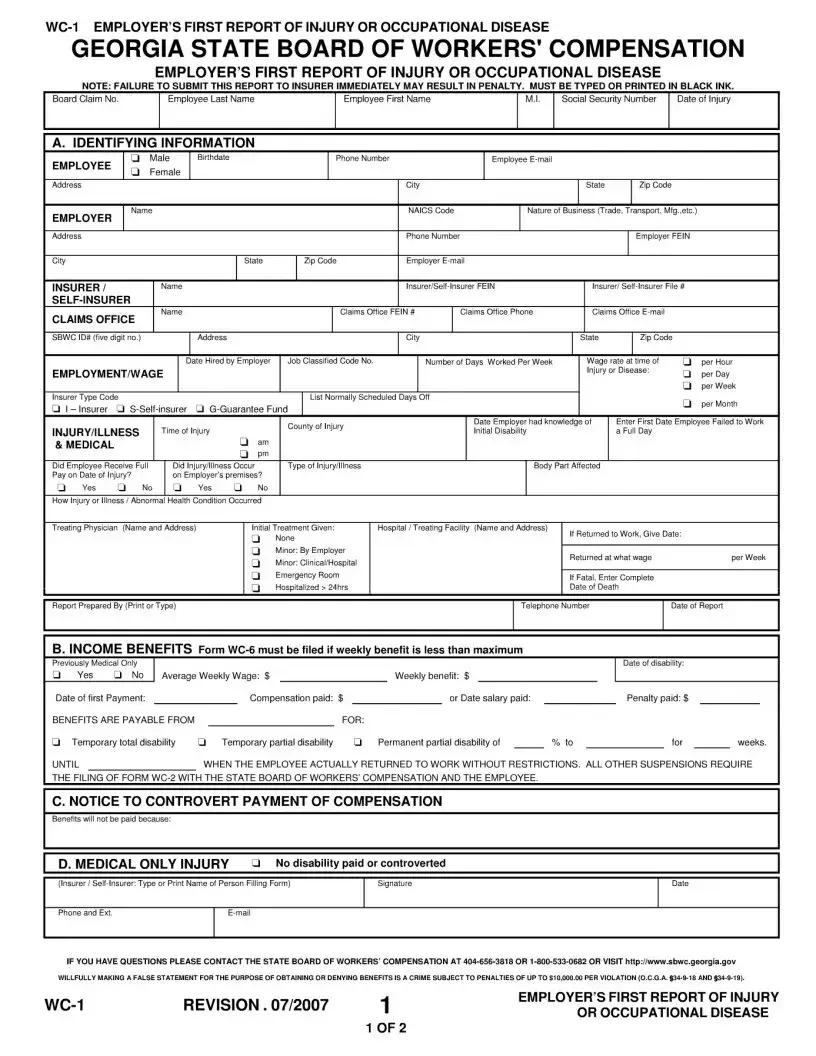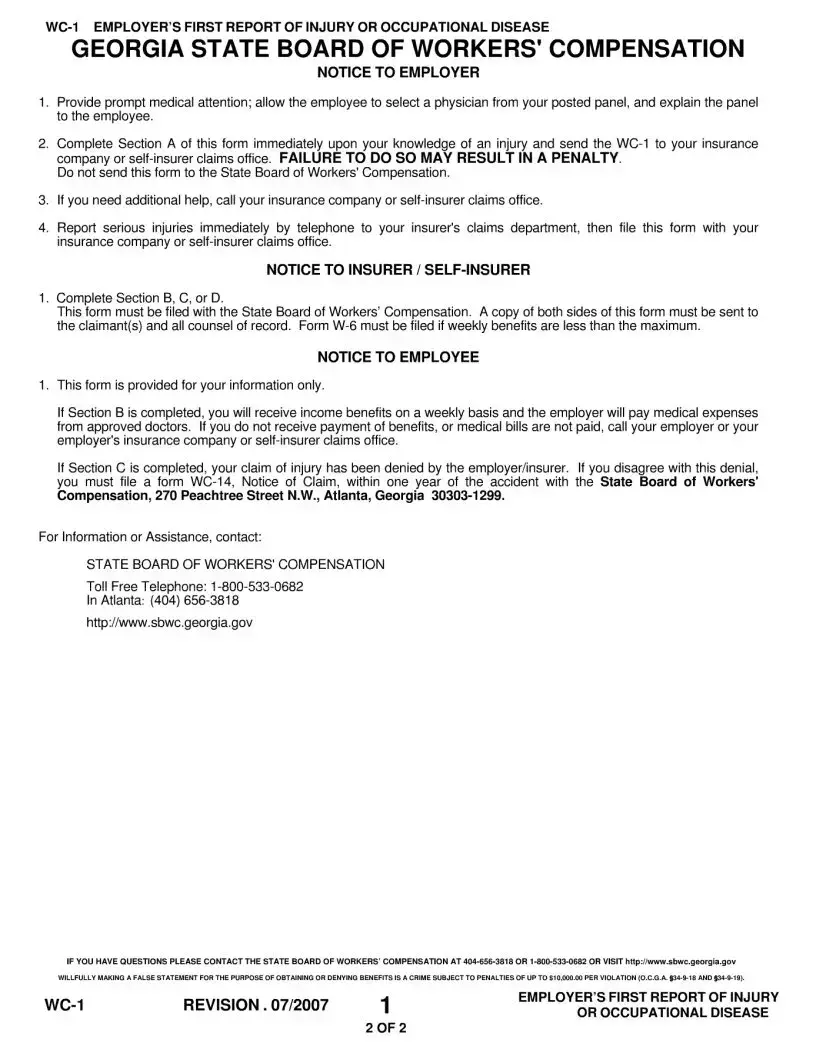Free Wc 1 Georgia Template in PDF
The WC-1 Georgia form is an essential document used in the state of Georgia to report workplace injuries or occupational diseases to the State Board of Workers' Compensation. This form initiates the claims process for workers seeking compensation for injuries or illnesses that occur as a direct result of their employment. Its completion is the first step in ensuring workers receive the support and benefits they are entitled to under state law.
Fill Out Your Document Online

